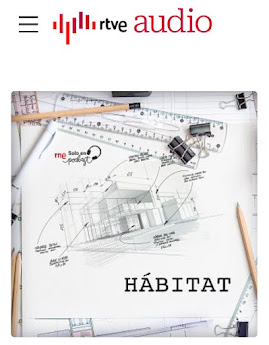Hay con nosotros arquitectos que nos hacen ver esa fisura nítidamente. Lo dicho por parte de muchos de nuestros contemporáneos no se compadece con lo logrado en la realidad construida. Hay mil ejemplos cercanos en los que se puede ver que las obras y su argumentario marchan palpablemente desacompasados. Seguramente el milagro se encuentra, precisamente, en el hecho de que la densidad mental y la de la obra encajen. Pocos lo logran y esto sirve para mostrar cuánto de independiente es la obra de su autor. A veces de padres memos nacen obras geniales, y viceversa.
Puede recurrirse a ejemplos ya históricos por no ir a lo sangrante de lo puramente actual. Wright criticaba a Le Corbusier por escribir tres libros por cada obra que construía. Claramente, Wright era consciente de esa brecha. En los demás. El discurso de los Smithson es mucho más hondo y avanzado que la obra edificada, por mucho que ésta sea valiosísima. Otro tanto sucede con Cedric Price. En el otro extremo, podemos encontrar casos lacónicos, vacíos u opacos, discursivamente, que alcanzan terrenos de verdadera hondura con su trabajo. A pesar de su evidente disparidad, Mies Van der Rohe, Paul Rudolph, Miguel Fisac o Craig Elwood son preclaros ejemplos de esto último... Como hecho construido, la arquitectura posee un nivel de densidad disciplinar, y no encuentro una palabra mejor, intelectual o cultural, que le es propia. Atañe al ser humano a un nivel sensorial y emocional diferente del mero discurso de la pintura, la música o la literatura. La toma de consciencia de esa brecha, además de ser un síntoma, supone un valioso rasero y una invitación. Tal vez al silencio.
There are architects among us who make us see this fissure clearly. What is said by many of our contemporaries does not match what is achieved in the built reality. There are a thousand nearby examples where you can see that the works and their argument march palpably out of step. Surely the miracle lies precisely in the fact that the mental density and that of the work fit together. Few achieve it and this serves to show how independent the work is from its author. Sometimes from less gifted parents, brilliant works are born, and vice versa.
Historical examples can be used to avoid going to the bleeding edge of the purely current. Wright criticized Le Corbusier for writing three books for each work he built. Clearly, Wright was aware of that gap. In others. The discourse of the Smithsons is much deeper and more advanced than the built work, as valuable as it is. The same happens with Cedric Price. At the other extreme, we can find laconic, empty or opaque cases, discursively, that reach areas of true depth with their work. Despite their evident disparity, Mies Van der Rohe, Paul Rudolph, Miguel Fisac or Craig Elwood are clear examples of the latter... As a constructed fact, architecture possesses a level of disciplinary density, and I can't find a better word, intellectual or cultural, that is its own. It pertains to the human being at a sensory and emotional level different from mere discourse of painting, music or literature. The awareness of this gap, in addition to being a symptom, implies a valuable yardstick and an invitation. Perhaps to silence.

















































































































